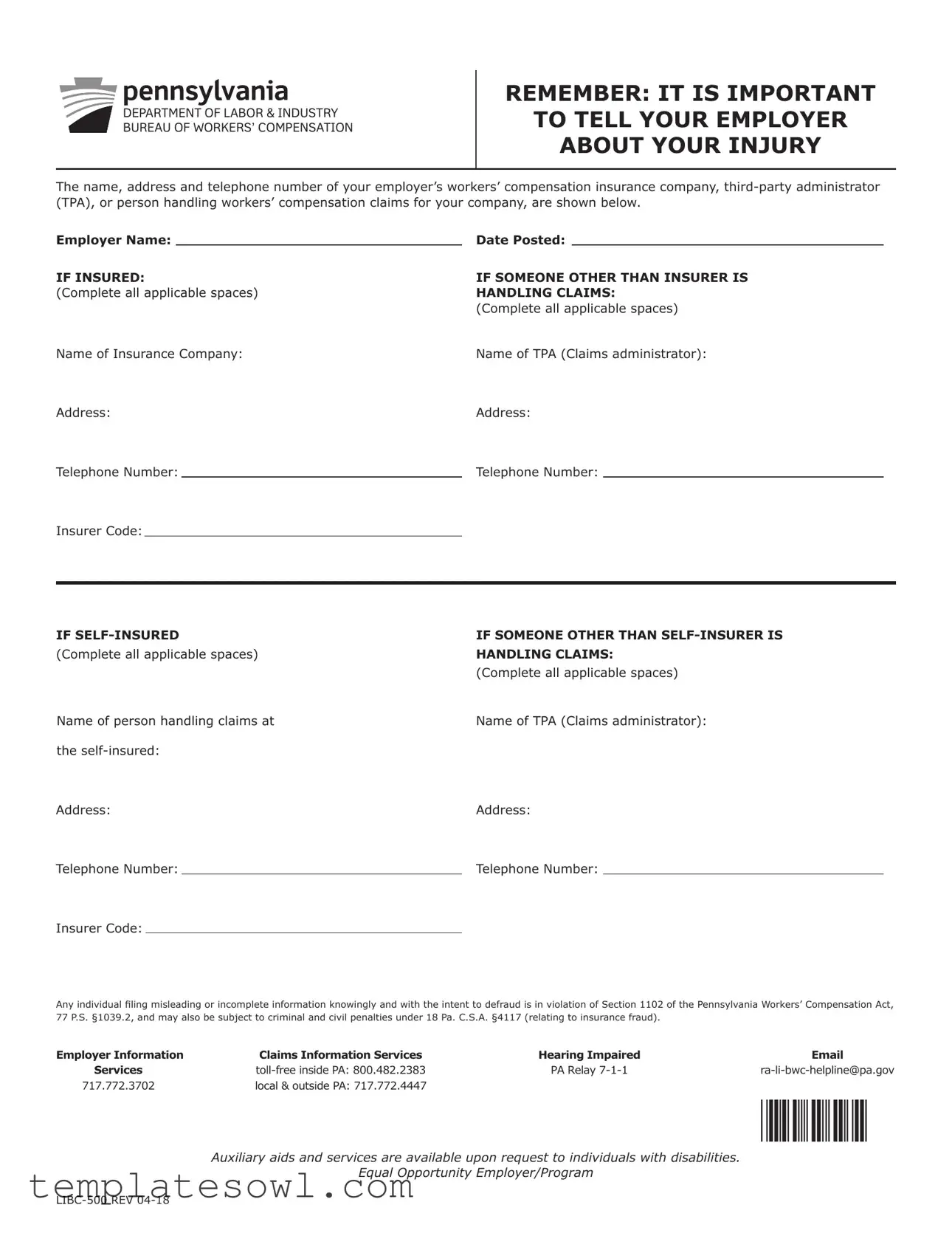What is the LIBC 500 form?
The LIBC 500 form is a document used in Pennsylvania for reporting workers' compensation claims. Employers and employees fill out this form to provide necessary information regarding workplace injuries. It ensures that the claims are processed efficiently by listing the details of the employer, insurance company, and claims administrator.
Why is it important to submit the LIBC 500 form?
Submitting the LIBC 500 form is crucial because it initiates the workers’ compensation claim process. It informs the employer and the insurance company about the injury and helps in managing the claim accurately. Timely submission can facilitate quicker access to benefits and medical care for the injured worker.
Who is responsible for filling out the LIBC 500 form?
Both the injured employee and the employer have responsibilities when it comes to the LIBC 500 form. The employee must report the injury to their employer and potentially provide details for the form. Employers are responsible for ensuring the form is completed accurately and submitted to the appropriate parties.
What information is required on the LIBC 500 form?
The LIBC 500 form requires details such as the name and address of the employer, insurance company, and third-party administrator handling claims. Additional contact information, such as phone numbers, is also necessary. These pieces of information help ensure that the claim is directed to the right organizations.
What should I do if I notice an error on the LIBC 500 form after submission?
If you discover an error on the LIBC 500 form after submission, it is important to address it promptly. Contact your employer or the claims administrator as soon as possible to discuss the necessary corrections. Timeliness is key, as delays may affect the processing of your claim.
What can happen if false information is provided on the LIBC 500 form?
Providing false information on the LIBC 500 form can lead to serious consequences. It is considered a violation of the Pennsylvania Workers' Compensation Act. Individuals may face civil and criminal penalties for insurance fraud, which can include fines or other legal actions.
Is there assistance available for completing the LIBC 500 form?
Yes, assistance is available for individuals needing help with the LIBC 500 form. Employers can provide guidance, or individuals can contact the Pennsylvania Bureau of Workers’ Compensation helpline for support. Auxiliary aids and services are also available for those with disabilities upon request.
How can I contact the Bureau of Workers’ Compensation for further inquiries?
You can reach the Pennsylvania Bureau of Workers’ Compensation through various methods. For toll-free calls within Pennsylvania, dial 800-482-2383. Local calls or inquiries outside of Pennsylvania can be directed to 717-772-4447. Email communication is also available at ra-li-bwc-helpline@pa.gov.
What is the purpose of the "Employer's Information" section on the LIBC 500 form?
The "Employer’s Information" section serves to identify the employer and provide specific details about the workers' compensation insurance. This information is crucial as it guides the claim to the appropriate insurer or claims administrator, facilitating a smoother claims process.

